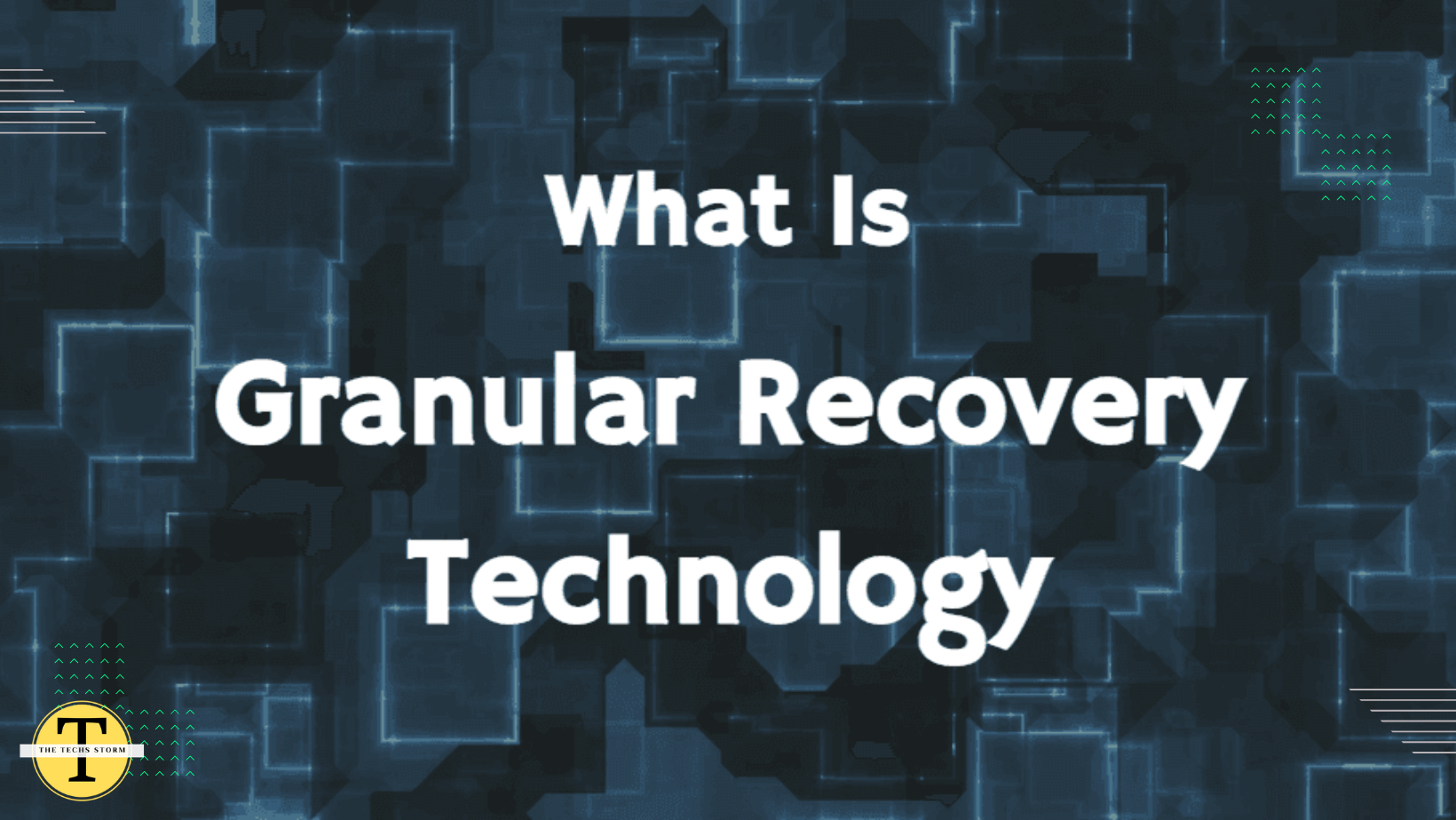Introduction
Granular Recovery Technology (GRT) is transforming backup and data recovery policies in companies. Without restoring the entire system, this method lets one precisely recover specific files, folders, or other data items from a complete backup. Apart from simplifying the recovery procedure, GRT guarantees that companies may keep continuity with minimum interruption. This introduction to GRT will look at its definition, advantages, and reasons behind its growing importance in contemporary data management plans.
What is Granular Recovery Technology?
Granular Recovery Technology is a complex method emphasizing the thorough recovery from a backup of particular data components. Unlike conventional recovery techniques requiring a complete system restoration, GRT lets managers choose particular items to recover—such as individual emails, documents, or database rows. In situations when data is regularly updated and the window for recovery must be small, this approach is especially helpful. GRT is a flexible utility available on several platforms and operating systems since it connects easily with many backup programs.
How Granular Recovery Technology Works
GRT starts the procedure with an extensive system backup. Unlike traditional backups, though, GRT-enabled systems record data in a way that individual elements are indexed and readily available. Should recovery be needed, the system administrator can just retrieve the backup, find the particular data requested, and straight forwardly restore it to the live system. Since just the required data is delivered, this approach not only saves time but also lessens the bandwidth required for recovery activities.
Benefits of Granular Recovery Technology
Faster Recovery Times
Reduction of system downtime is one of GRT’s main advantages. Time in the fast-paced corporate settings of today is sometimes associated with money. GRT reduces the time required for data recovery, therefore allowing companies to rapidly resume regular activity. Maintaining service levels and guaranteeing that business impacts are limited after data loss events depend on this fast recovery.
Improved Accuracy
GRT provides unrivalled data recovery accuracy. When working with complicated databases or systems where a single mistake could cause major problems down-road, this accuracy is absolutely vital. GRT guarantees that data integrity is preserved all through the recovery process by letting particular data items to be restored.
Applications of Granular Recovery Technology
Granular Recovery Technology finds use in various important spheres. For companies, it’s revolutionary for recovering specific objects like emails or documents without compromising whole databases. By enabling exact data restoration—necessary for handling vast amounts of data across cloud environments—GRT helps to provide efficient data management in cloud computing. Moreover, GRT is absolutely essential in virtualized systems as it guarantees rapid recovery of particular virtual machine instances, therefore improving the general resilience of IT systems.
Challenges and Considerations in Implementing GRT
Adopting GRT presents several difficulties. Common technical challenges are establishing the appropriate degree of data indexing and making sure systems are compatible with current ones. Furthermore, security is a top issue since strict access limitations must be combined with the granular recovery features to stop data leaks. These difficulties need for meticulous preparation and knowledge to guarantee that the advantages of GRT are realized without endangering the security or functionality of the current IT infrastructure.
Future of Granular Recovery Technology
Granular Recovery has bright future prospects since ongoing developments target to improve its efficiency and integration capacity. GRT is projected to becoming more advanced as cloud and virtualization technologies develop and provide even more flawless, scalable solutions. Artificial intelligence and machine learning innovations could improve GRT procedures by means of automation and simplicity enhancement.
Case Studies
Many companies have effectively used GRT to handle challenging data recovery requirements. From small businesses to big companies, these case studies show how adaptable and successful GRT is in many different situations. They are evidence of how strong GRT is as a fundamental instrument in contemporary data management plans.
Conclusion
In data recovery and management, granular recovery technologies constitute a major advance. For every company trying to improve its data recovery capacity, GRT is a great tool because of its ability to do focused restorations and fit with contemporary IT systems. GRT is expected to become even more important to IT strategy as technology develops since it gives companies the means to properly and efficiently handle their data.
FAQs
What is Granular Recovery Technology?
Granular Recovery Technology (GRT) lets particular files or data items from a full backup be recovered without restoring the whole system.
How does Granular Recovery Technology differ from traditional data recovery methods?
Unlike conventional solutions requiring a complete system restore, GRT allows selective data restoration straight from backups.
Can Granular Recovery Technology be used for cloud-based backups?
Indeed, GRT is quite efficient in cloud situations since it lets exact data recovery across backup systems and cloud-based storage possible.
Is Granular Recovery Technology compatible with all types of data?
Emails, documents, database entries, and virtual machine setups are just a few of the several data sources GRT may be used with.
What are the primary benefits of implementing Granular Recovery Technology?
Faster recovery times, more accuracy in data restoration, less bandwidth needed, and less running downtime are the main advantages.








